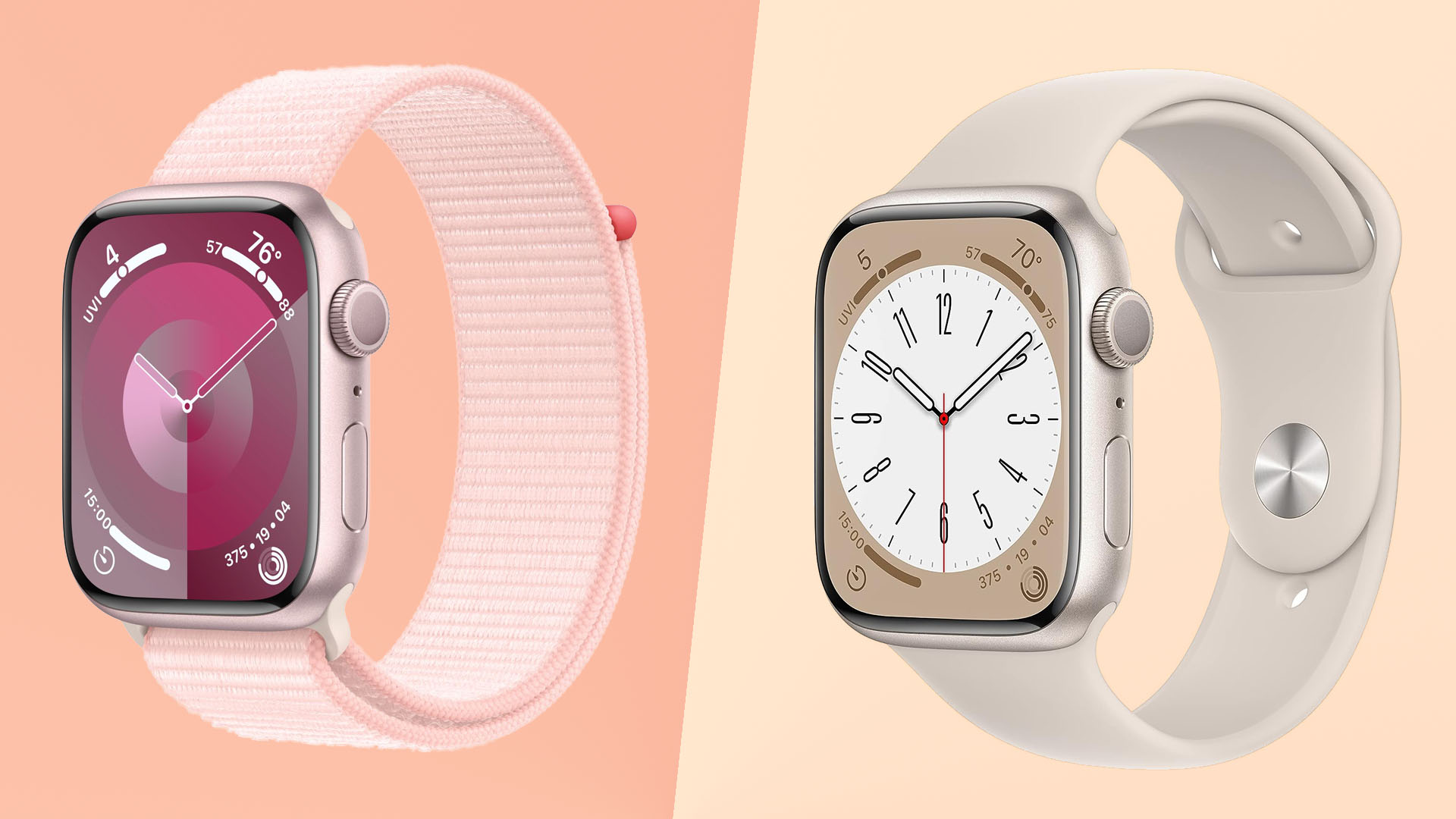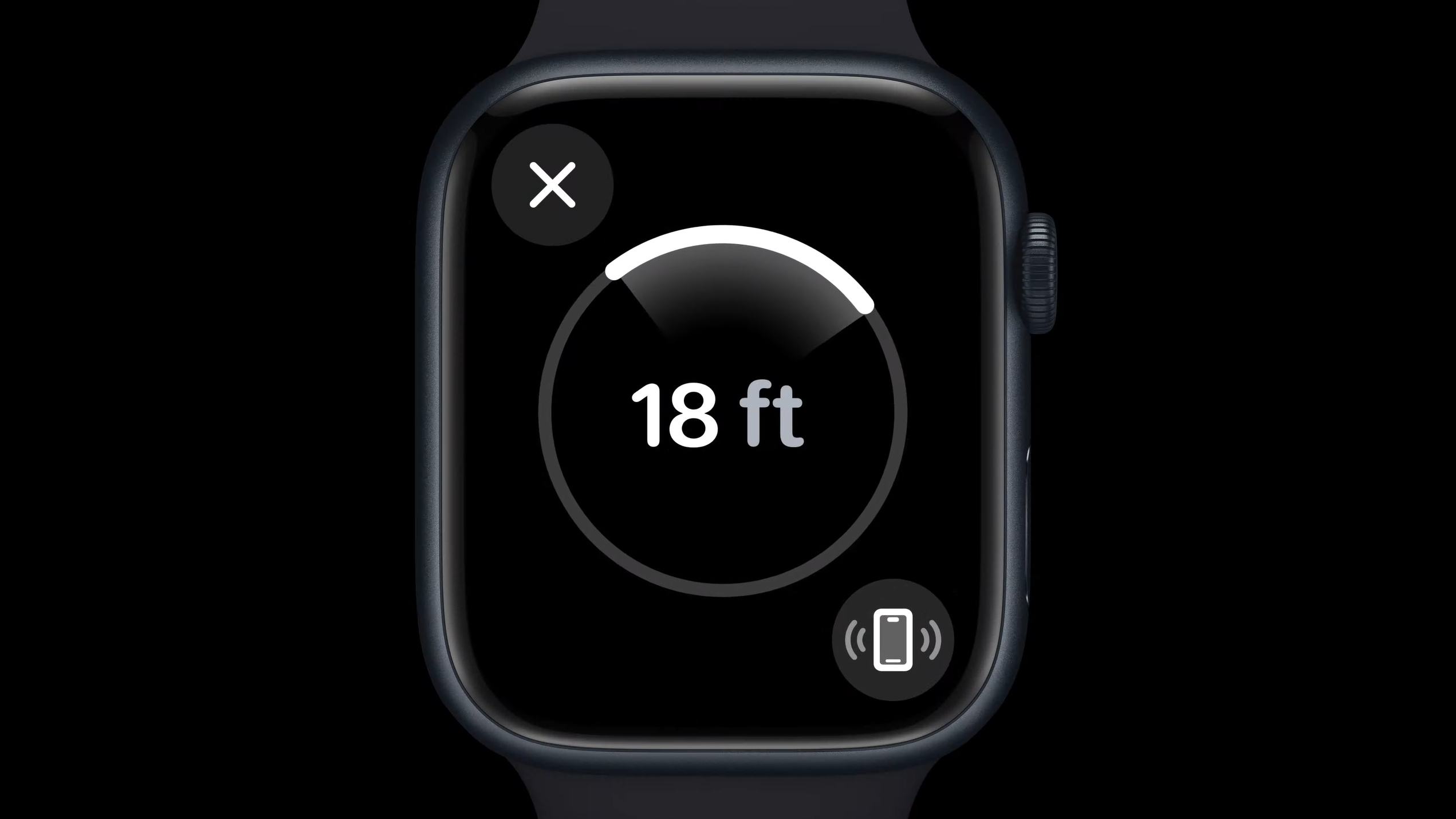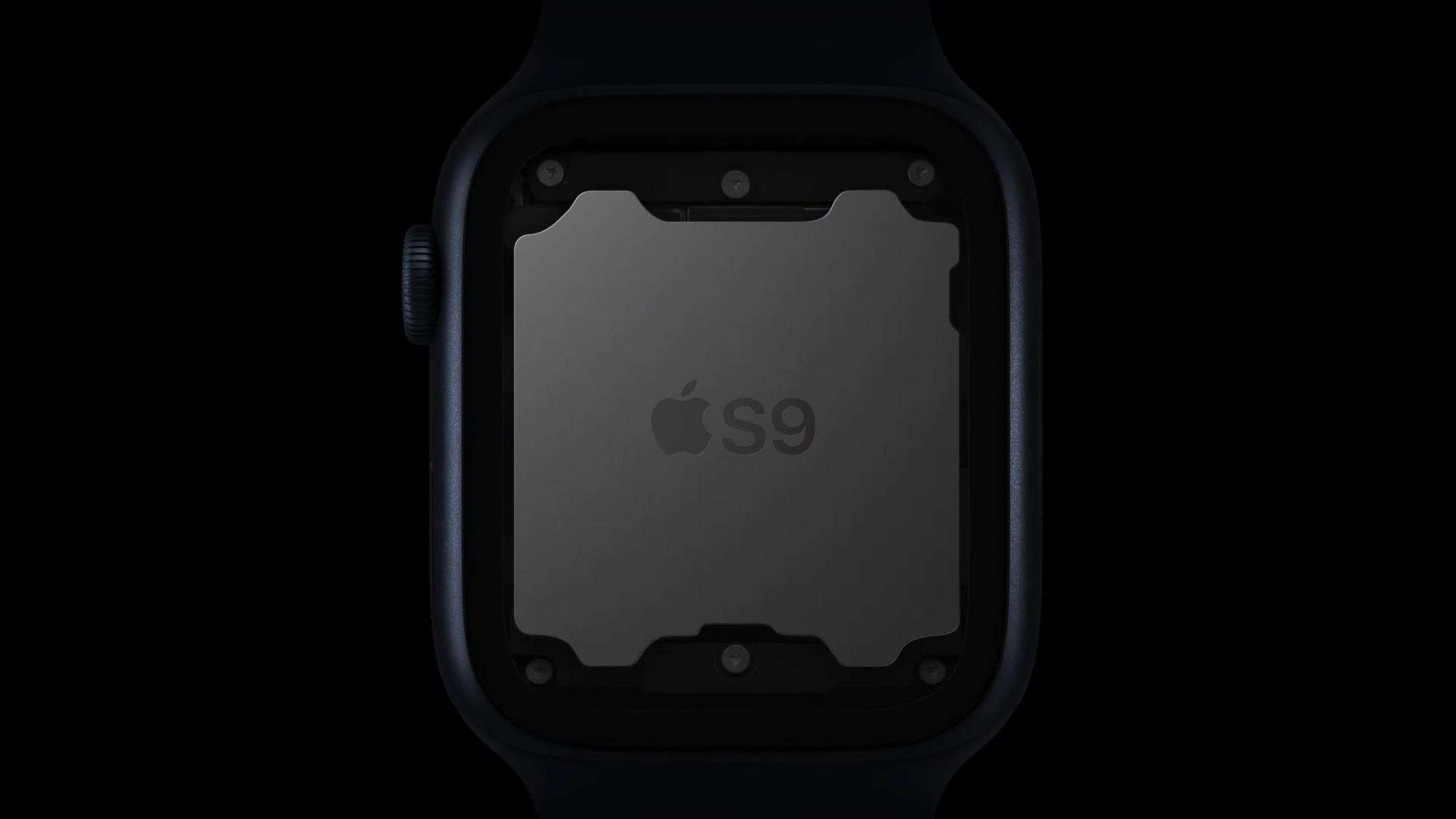Apple Watch 9 vs Apple Watch 8 – all the differences explained
How much better is the new Apple Watch, really?

Apple announced the Apple Watch Series 9 on September 12, 2023. It has bumped the Watch 8 into obsolescence, sort of – you can no longer buy a Watch Series 8 direct from the Apple website, at least. It’s a has-been.
But if you're buying in the next few weeks, you'll be able to buy the Apple Series 9, yes, but also the Apple Watch 8 from lots of online retailers, so you'll have the choice. Or maybe you already have the Apple Watch 8 and are thinking of upgrading – either way, the question to answer is: is the Apple Watch Series 9 actually any better, when you really get down to it?
While we are yet to give the new watch our full review treatment, we already know plenty to compare these two models, to help you work out which will be the best Apple Watch for you. Let's get into the differences.
Apple Watch 9 vs Watch 8: Price & availability
The Apple Watch Series 8 was released on September 16, 2022, and has now been removed from sale on Apple's online store.
The Apple Watch Series 9 will be released on September 22, 2023, but is available to pre-order now.
Both models are the same price in the US: $399 for the 41mm model in aluminum. In the UK, the price of the Watch 9 has fallen slightly, now starting at £399 instead of £419 for the Watch 8. In Australia, the price has risen slightly, now AU$649 instead of AU$629 for the 8.
Apple Watch 9 vs Watch 8: Design & display

You’ll struggle to notice much of a difference between these two watches based on a pure visual take. However, if you bump into a pink Apple Watch, you’ll know it’s a Watch Series 9, because that shade is new for this generation.
Get daily insight, inspiration and deals in your inbox
Sign up for breaking news, reviews, opinion, top tech deals, and more.
Both models come in either 41mm or 45mm size, and both have sharp Retina display screens at the same resolution. These displays are not exactly the same. though.
The Apple Watch Series 9 has double the peak brightness, reaching 2,000 nits compared to the Watch Series 8’s 1,000 nits. That upper figure is the same as the original Apple Watch Ultra’s, for truly excellent clarity on the brightest days. (The Apple Watch Ultra 2 has upgrade to 3,000 nits, for those wondering.)
Perhaps more useful for some, the Apple Watch Series 9 is also capable of dimming down further than the Watch Series 8. Apple says it can reach as low as 1 nit. This super-low brightness will come in handy for movie theater or when wearing it in bed, most obviously. But, hey, perhaps some of you have other reasons to be hanging out in dark rooms.
Most other parts of the watches are a match. You have the option of aluminum or, for more money, a stainless steel casing. The aluminum option has GPS but no 4G as standard, and you can add that for a higher cost. The steel versions all have 4G regardless. Both new and old models have 5ATM water resistance.
Apple Watch 9 vs Watch 8: Features

The basics of the Apple Watch Series 8 and Series 9 are the same. These watches run watchOS 10 (after an update, in the case of the Watch 8), and share many of the same core features.
There’s GPS, ECG heart health readings, the optical heart rate array and, introduced in 2022, a clever temperature sensor that can estimate ovulation times after the fact to help fertility planning.
While the Watch Series 9 does arguably not introduce any tentpole wearable/fitness features, there are some important changes. It has 64GB storage, for example, compared to 32GB in the Watch Series 8 – that means more songs in playlists, more apps, and more complex versions of watchOS in the future.
In the Watch 9 you are also able to, in a slightly limited way, interacti with Siri regardless of whether you are connected to the internet or to your phone. This is because the Watch Series 9 now has the machine-learning power to process some voice recognition tasks directly on the device.
Such interactions include asking Siri to start a tracked exercise, exactly the sort of thing you might want to do without having your phone nearby. You’ll also be able to use this “on-device” Siri to file health data such as logging your weight or medications taken, and ask Siri for some health data, such as how much you slept the night before.
The Apple Watch Series 9 also introduces a new gesture to control it without actually tapping on the screen or talking to it. You can double tap your thumb and index finger together to do all sorts, varying by context.
It can accept a call, or end a call currently in progress. It will play or pause music, and cycle through menu items in certain places in the watchOS interface.
This feature uses a combination of signals from the accelerometer and gyroscope motion sensors, and even the optical heart rate reader because of how making the gesture affects blood flow.
This new gesture is only available to the Apple Watch Series 9 and Watch Ultra 2, not older models. A charitable explanation is that the machine learning chops required to process these data signals in real time would result in too much lag with the older hardware.
The Apple Watch Series 9 also has a new “second generation” ultra-wideband Apple location chipset, up from the U1 of the Watch Series 8. In another slightly confusing move, Apple says this enables Precision Finding for the new watch. This is where the watch shows the distance and direction of your iPhone when you can’t find it – potentially useful!
The new U2 chip can do this over longer distances, which is possibly why Apple is limiting the location-based feature to the newer model – it'll be a much better experience.
Apple Watch 9 vs Watch 8: Performance & battery life

The Apple Watch Series 9 has a new processor at the heart of it, called the S9. Apple says the S9 has 60% more transistors than the Apple Series 8’s S8 processor, and that does make a good amount of sense when the Apple Watch Series 6, 7 and 8 chipsets are based off the same ageing Apple A13 Bionic architecture. The new chipset has 5.6 billion transistors, for those wondering.
The GPU side of this processor is 30% more powerful according to Apple. And, perhaps most impactful of all, the quad-core neural processor is apparently twice as swift.
Getting more power isn’t as appealing as upgrading the power of, say, a gaming PC. The biggest advantage seems to be that the neural processor enables the on-device Siri and Double Tap gesture functionality. But it does also mean the Apple Watch Series 9 is a great time to jump on-board with Apple smartwatches, as support for this hardware may be especially lengthy. We could see another three generations with a similar processor at heart, so it should be considered nicely future-proof.
Despite the dramatic change in internal hardware, Apple says battery life of these two watches should last a similar amount of time. They are rated for 18 hours of use. We're very keen to test this – the Apple Watch Series 8 is actually good for two days of use from a single charge (including sleep tracking) in our experience, so we'll see if the new processor in the S9 changes that one way or another.
Apple Watch 9 vs Watch 8: Conclusion
The Apple Watch Series 9 is not quite a killer upgrade that will set jaws dropping across the land. However, the direction it sets out is an interesting one.
A smartwatch you can operate partially with subtle one-arm gestures? That is something new. And being able to talk to Siri without the help of an iPhone or an internet connection? That’s a digital assistant dream for some of us.
And the brighter screen will pop for anyone on sun-drenched days, and should help it feel less like a load of pixels more like a real watch face.
We are also interested to see how far these gesture controls go in future, given the Apple Vision Pro headset due next year relies on them almost entirely. Our futures may be full of hand-wringing, but in a good way.
You might also like
Andrew is a freelance journalist and has been writing and editing for some of the UK's top tech and lifestyle publications including TrustedReviews, Stuff, T3, TechRadar, Lifehacker and others.
